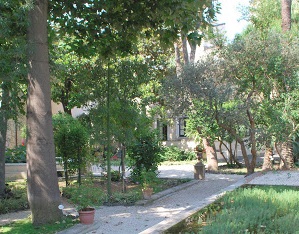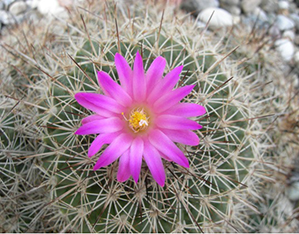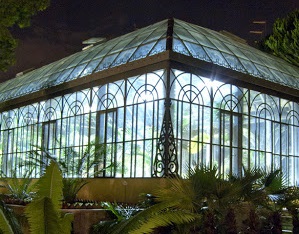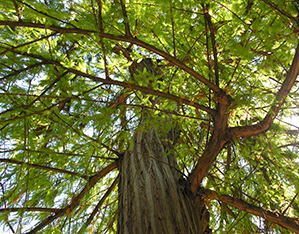 Warning
Warning
Due to the current health emergency situation, visiting times and procedures may be subject to change. It is therefore advisable to check them by contacting the garden directly.
Established in the mid-nineteenth century, the Botanical Gardens of Catania are an important scientific institution home to unique collections of succulents, palms and spontaneous Sicilian plants.
The institution of the Orto Botanico was strongly promoted by monk Francesco Tornabene, professor of Botany at the University of Catania since 1843 . A suitable location for the gardens was found in the Borgo district, along today’s Via Etnea, and bought in January 1847. Due to the 1848 uprisings, work was only started only in July 1858. The designs for the buildings were entrusted to Mario Distefano, professor of Architecture in the same university, and the first plants from Sweden, France, Naples and Palermo were planted in 1862. In 1865 The Orto Botanico saw the addition of collections of cotton and tobacco plants and, thanks to a bequest from Mario Coltraro from Catania, came to include a whole area inteded for spontaneous Sicilian flora. In 1906 director Luigi Buscalioni promoted an extension of the institution introducing a new flora organisation based on Engler’s taxonomy instead of Linneaus’. The area is divided into a 13000-square-meter “Hortus Generalis” home to exotic plants, and a 3000-square-meter “Hortus Siculus” intended for the cultivation of local spontaneous species. The oldest section of the gardens is organised in geometrically defined sections, forming a cross with small winding paths that meet in irregular openings, some of which contain circular ponds, giving the garden an overall formal structure. The Orto Botanico also features a large greenhouse, reconstructed in keeping with the original that was destroyed during the last war.
Highlights

The “Hortus Siculus”
This section, instituted in 1865, with its collection of spontaneous island plants, is a protected area for rare and endangered species. It features small-scale reproductions of various typical Mediterranean habitats (dunes, rocks, damp habitats, woods scrub) recreating various aspects of the Sicilian landscape.

Succulent plants
Succulent plants constitute the richest Orto Botanico collection with about 2000 species, mainly cacti, euphorbias, and aizoaceae. The aloe collection is also of note with dozens of species, mostly South African, arborescent and shrubs, that produce large clusters of brightly coloured flowers. The euphorbias collection includes remarkable specimens of huge Euphorbia abyssinica and E. candelabrum.

The “Tepidarium”
This large greenhouse holding over 160 ornamental and edible plant species, is a reproduction of the original iron and glass greenhouse – an imitation of the Carolina Greenhouse in Palermo – that was destroyed during World War II. The central pond with the delicate lotus plants is particularly spectacular.

Exotic plants
Among the most remarkable specimens living in the Orto Botanico since its foundation are some very large trees, such as the Taxodium mucronatum cypress with its reddish bark; the Phytolacca dioica, a majestic tree originally from South America; theMaclura pomifera, also known as Osage orange, from the name of the Indian tribe who, when in war, coloured their faces with a yellow pigment extracted from the roots of the plant.
 Orto Botanico di Catania
Contacts
Orto Botanico di Catania
Contacts
Contacts
Telephone:+39 095 430901
Other contacts::Fax: +39 095 441209
Address
Via Etnea 397
95125, Catania (CT)
 Orto Botanico di Catania
Opening times and prices
Orto Botanico di Catania
Opening times and prices
Opening hours
The Botanical Garden is open to the public
- Monday to Friday from 9.30 a.m. to 6.30 p.m.
- on Saturdays from 9.30 a.m. to 12.30 p.m.
Closed on Sundays.
Pricing
Admission to the Botanical Garden is free.
Guided tours take place upon reservation for a minimum number of 10 paying participants.
Costs for guided tours are as follows:
- Full price: € 8
- Reduced price (first Sunday of the month, over 65, for groups over 20 people): € 5
- MonasteroCard holders: € 4
- University students: € 3
- Reduced price for UNICT students and young people from 13 to 18 years: € 2
For more information and to book guided tours contact Officine Culturali
 Orto Botanico di Catania
How to get there
Orto Botanico di Catania
How to get there
Address
Via Etnea 397
95125, Catania (CT)
Latitude: 37.515374
Longitude: 15.084266
How to arrive by road
From Messina
- Motorway A18 Messina-Catania after the tollgate of Catania, take the ramp to Catania center.
From Palermo
- Highway A 19 Palermo-Catania. Exit the A19 motorway on the Tangenziale di Catania in the direction of Messina until the exit Catania centro (last exit for Catania).
How to arrive by train
The State Railways allow convenient connections with the station of Catania Centrale. Public transport (taxis or city buses) can be used to reach the Department’s headquarters.
Additional directions
In Ship:
- The port of Catania allows connections through several shipping companies.
From the airport:
- The city bus (Alibus) leaves every 20 minutes. The ticket can be purchased at the exit of the air terminal. The Alibus arrives at the railway station; city and intercity buses leave from the square in front of the station for all destinations.
 Orto Botanico di Catania
Services/Accessibility
Orto Botanico di Catania
Services/Accessibility
Services
At the Botanical Garden of Catania there are paths and workshops for schools of all levels. For school groups, reservations are required at 095 7102767. For more information about the educational proposals, consult the website
 Orto Botanico di Catania
Private events
Orto Botanico di Catania
Private events
 Orto Botanico di Catania
Itineraries
Orto Botanico di Catania
Itineraries
You could find the garden in these itineraries
 Favorite saving result
Favorite saving result
 Warning!
Warning!
You've have to sign up or sign in to add this element to your favorites.
